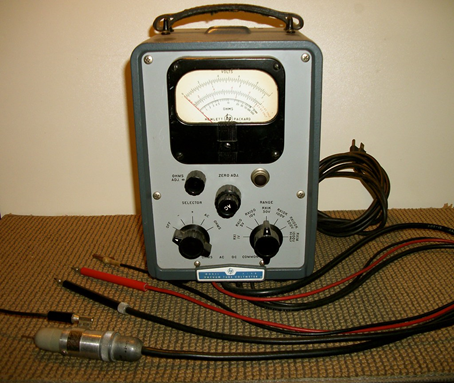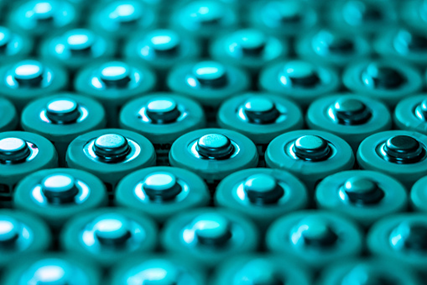How to Revive a Dead Lithium Battery?
Aug 28, 2020 Pageview:8017
Lithium batteries are primary batteries that come with anode i.e. metallic lithium. These types of batteries are also known as lithium-metal batteries. Depending on the chemical compound and design used, lithium cells are capable of producing voltages from 1.5 V to 3.7 V (approximately). Lithium-ion batteries are secondary batteries and they are rechargeable batteries. However, lithium is quite useful as its ions can be positioned to move between the cathode and anode.
Plus, lithium-ion batteries have a number of advantages over other batteries such as NiMH and NiCad. With lower self-discharge, no memory effect and high capacity make lithium-based battery are the ultimate choice for a wide range of applications.
For such a good battery, you may need more protection or storage tips for it, here you can enter: Revive Lithium Battery-Possibility, Reviving and Protection, Do You Restore Lithium Ion Battery in Freezer?
Before disposing of your lithium-ion battery that seems to die, it is recommended that you should first try to bring it back to life. However, when reviving lithium batteries, extra care is required so that everything goes fine. Keep in mind that the electrolyte present inside these batteries is flammable and also, the cell pressurized itself. Thus, stop immediately when you are in any doubt and don’t forget to wear safety glasses whilst while you are working with lithium batteries.
Restore lithium-ion battery Myth
A decade ago nickel-metal hydride and NiCad rechargeable batteries were quite common in laptops and phones, but with the drive for more energy in smaller and light mobile units, lithium-ion batteries surpass these batteries. At present, lithium-ion batteries are used in all electronic devices, be it a smartphone, laptop or tablet. In fact, solar storage system and electric car use lithium technology for a while.
Before you learn how to revive a dead lithium battery, check out the following interesting myths about lithium-ion batteries.
· Fully discharging a battery before charging it
Many say that completely discharging a battery can help you to extend battery life. But, this myth is not true according to many studies. In fact, a complete discharge can truly harm or damage the widely used lithium batteries. However, there is no doubt that a dull discharge does help you to predict better about the remaining battery life. But, it doesn’t mean that it aids the battery and it just provides you a better idea about when it’s time to restore the battery.
· Placing batteries in a freezer can help to the extent their life
There is no doubt that heat can surely impact on the life of a batter. Have you ever wondered what about the cold? Well, truth is that the lithium-ion batteries do much better when you store them at room temperature.
· Battery goes through a memory effect that causes it to hold less charge
Well, this myth arises from the old NiCd batteries as these batteries are famous for their memory retention. However, the myth no longer applies to lithium-ion batteries.
· Battery is worthless past its expiration dates
Have you ever seen a date on lithium-ion batteries or their packages? The exportation date indicates the battery shelf life. The battery may begin to lose some of its power or efficiency over the time that particular date arrives. However, there is still a little bit of use present in it.
How to Revive a Dead lithium battery Properly?
As we told earlier, you should try to bring your battery back to life before you disposing of it. There are some tools you need to make sure that the process begins effectively:
· Voltmeter
· Clips
· Lithium-ion charger
· Airtight bag
· Safety glasses and gloves
Before you begin, don’t forget to wear safety gloves and glasses.
1. Check the voltage
To begin with, switch off the power source to that appliance using your battery and then, remove your battery. Next, read the voltage using your voltmeter. Keep in mind that lithium batteries generally enter into sleep mode if they are drained too much.
2. Connect to a working or healthy battery
Take a properly working battery and it should be rated at the voltage same to as the dead one. Now, connect them using crocodile clips. Make sure that you have connected +ve (positive) to -ve (negative) in order to create a properly working circuit. Now, leave them connected for maximum 10 - 15 minutes and don’t forget to keep a close eye for signs of overheating and damage.
3. Check the voltage again
Now, you have to take another reading of your dead battery. At this stage, the battery now will have much bigger voltage and capable of accepting a charge.
4. Charging and discharging the battery
Plug your battery into the charger (use lithium-ion charger) and let it a full charge. This will take around three hours and it also depends on the what kind of Li-ion battery you are reviving. After that, you need to discharge the batter again.
5. Freeze the battery
Seal the battery in a bag that is airtight and then, place it in the freezer for almost 24 hours. Here, ensure that there should no moisture in the bag as it could make the battery wet. After you take the battery out of the freezer, allow it to thaw for up to 8 hours to revive it to room temperature.
6. Charge the battery
Place the battery in the charger and let it charge fully. We hope that the performance of your battery is now improved and it will then start accepting a charge again.

Dead Lithium Battery Recycle Methods
Lithium based batteries generally contain useful metals such as copper, aluminum, nickel, cobalt, and other rare earth metals. Thus, recycling procedures for lithium batteries are required in order to prevent a shortage of these precious metals. These procedures are done to not only to regain copper, aluminum, nickel, and cobalt from the dead battery, but also a remarkable quantity of lithium. To accomplish this goal, numerous steps need to perform -
· Discharging or deactivation of the battery.
· Disassembly of lithium battery systems.
· Mechanical process, which includes the crushing process, sorting process, and sieving process.
· Electrolyte recovery
· Hydrometallurgical procedures (to obtain metals from their ores)
· Pyrometallurgical procedures (thermal treatment of the metals)
There are some specific dangers while recycling lithium-ion batteries - chemical dangers, electrical dangers, burning reactions, etc. However, the best method to recycle lithium batteries is to take your old laptop or electronic device to a recycling center. The technicians at the recycling center know very well how to perform recycle process for batteries of all sizes and shapes.

- Prev Article: Do Lithium-Ion Batteries Have Memory?
- Next Article: Lithium-Ion Double-A Rechargeable Batteries
Leave Message
Hottest Categories
-
Hottest Industry News
-
Latest Industry News














